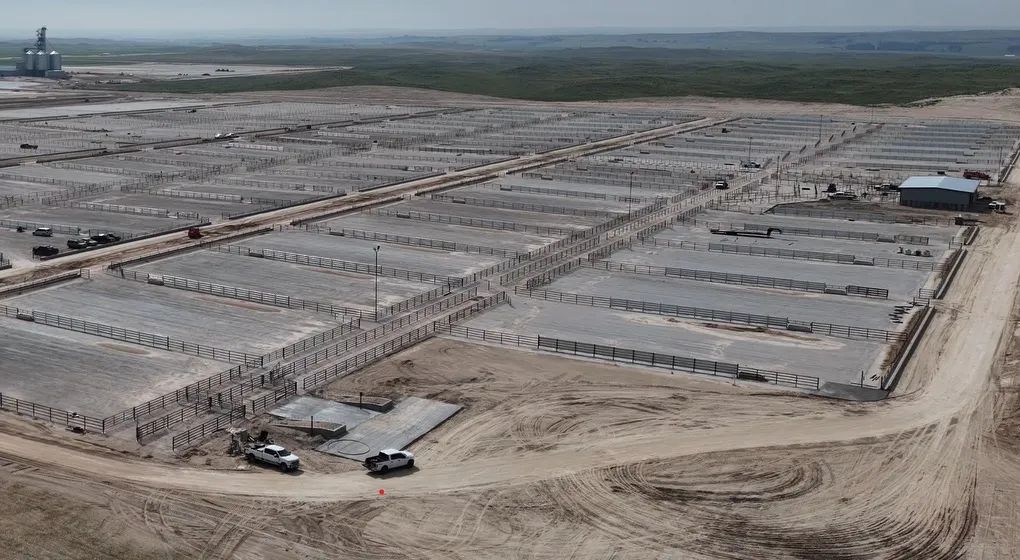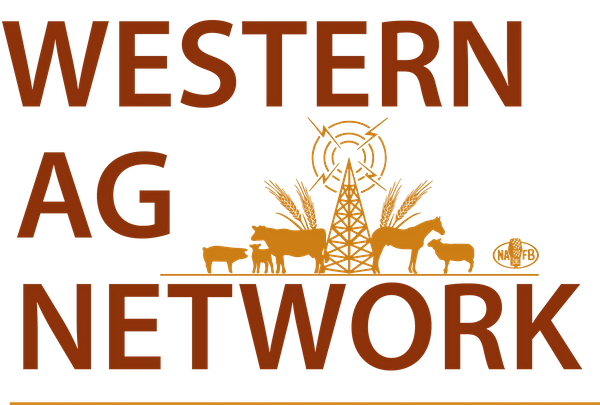
Nebraska's Blackshirt Feeders poised to be most environmentally friendly in world
WASHINGTON, D.C., September 13, 2024 —The name Blackshirt Feeders is a nod to the Cornhusker defense, but Dr. Eric Behlke and his partners are doing everything to be proactive, rather than on the defensive. Behlke grew up a few miles north of nearby Benkleman on a cow calf operation before earning his first doctoral degree in Ruminant Nutrition from his beloved University of Nebraska. His second doctoral degree in Veterinary Medicine was earned at Iowa State University.
Behlke said his education, and his Sandhills upbringing, prepared him for what he calls his dream job, a feedlot consulting position at what was previously Feedlot Health Management Services, now Telus Agriculture in Okotoks, Alberta. It is, 14 years later, still his dream job. As a feedyard consultant uniquely poised to provide both veterinary and nutrition consulting, he travels domestically and internationally serving feedyards.
He and two of his cohorts at Telus, Kee Jim and Calvin Booker, both veterinarians, are the founding partners in Blackshirt and as the vision has become reality, the ownership group has added individuals, all of whom, he said, bring unique perspective, ideas, thoughts, and experiences into the design and development of the Blackshirt facility.
He said he still feeds his farming habit in southwest Nebraska, where he spends about 70% of his time, especially during fall harvest.
“I had just returned home from Kazakhstan and was planting corn when the idea for Blackshirt Feeders was hatched,” he said. “I had just gotten back from a trip all around the world and was literally in the corn planter and looked at southwest Nebraska. They are feeding cattle all over this globe and look at this absolutely amazing spot right here. Why is there not a large feedlot in western Nebraska?”
Six years after that crop and just over a year after breaking ground, the yard is about to accept their first loads of cattle, including Sandhills-raised yearlings. At capacity, Blackshirt Feeders near Haigler, Nebraska, in western Dundy County will feed 150,000 head of cattle and about 125 employees. Behlke anticipates having 50,000 cattle on feed at the end of 2024 with about 50 employees.
The arid climate of Dundy County makes it well suited to cattle feeding and the abundance of corn grown in the area irrigated by the Ogallala Aquifer makes the price of corn favorable to cattle feeding. The area is equidistant to the major packers and while Behlke said they don’t yet have any definitive agreements with packers, the yard is located to easily transport cattle to Fort Morgan or Greeley, Colo., Lexington, Grand Island, or Omaha, or Garden City or Dodge City, Kansas for slaughter.
Blackshirt is long on innovation, literally from the ground up. Roller-compacted concrete makes up the pen floor surfaces, making the pens impermeable to water. This has a positive effect on cattle performance and health without the mud, and by preventing contact with soil, the smell of money – along with flies and dust - is greatly reduced. With easier pen cleaning, the manure isn’t as likely to undergo anaerobic fermentation. Less odor is second only to the protection of groundwater and surface water. The concrete surface is slightly more textured than that of a typical sidewalk due to the higher amount and larger size aggregate used. The pens, he said, are bedded with corn stalks or wheat straw to provide a cushioned surface so the cattle aren’t standing on concrete. The difference, he said, is rainfall or snowmelt doesn’t permeate the concrete but runs off.
“All of the runoff will go from the roller-compacted concrete pens into high density, polyethylene lined catch basins,” he said. “From there, we have an anaerobic digester associated with the facility so the runoff will go there. It’s a large feedlot, but it will be the most environmentally friendly feedlot in the world.”
The digesters produce renewable natural gas from manure. Initially, the natural gas produced (and some purchased) will be used to power the boilers for the corn flakers. At capacity, the yard will be a net producer of natural gas, and it will be piped to a large natural gas field south of Wray where it will enter a commercial line for use by a carrier. There will initially be two flakers and at capacity, there will be four functioning.
There will be, he said, a significant percentage of beef on dairy bred feeder cattle at the yard and Behlke said there are some distinct advantages. He said the supply of feeder cattle is consistent compared to native herds that consist primarily of spring calving herds and fall calving herds. The seasonal influxes are certainly manageable and there will be no shortage of those cattle at Blackshirt bunks either. Beef on dairy bred cattle are predictably available year round, and also provide predictable performance, especially among sire groups. With traceability from calfhood via EID tags, he said the performance of sires is easily tracked and evaluated, allowing for an extremely consistent animal.
“There’s always been some divergence between the two bovine industries, and this is just another way to bring them together,” he said. “Both industries are focused on producing protein from cellulose and no matter what form that protein is in, this is just another way to bring the industries together.”
One of the cornerstones of the feedyard consulting model has been chute side data collection and the technology in place to offer unmatched traceability, oftentimes from conception to harvest, is significant.
“We know everything that happens to that animal, when it happened to that animal, how it happened to that animal,” he said. “It is the epitome of traceability and transparency in an industry where it seems like the consumer is interested in a lot more transparency.”
For local agricultural producers, Behlke said the increase in the agricultural economy is a significant advantage. According to Nebraska Public Power District’s Economic Development department’s research and use of the multipliers made available by NPPD with gross sales, Behlke anticipates a $366 million economic impact annually. In the four-county area including Dundy, Chase, Hitchcock, and Hayes Counties, the annual gross sales of livestock is currently about $525 million annually. Adding Blackshirt’s estimated gross sales will inject about a 70% increase. Consumer dollars circulate nearly an estimated 3 times for each dollar paid to an employee so the anticipated $8.2 to 8.3 million payrolls for 120 to 130 employees, equates to an additional $25 million circulating annually within the community.
Behlke said the opportunities far outweigh any potential challenges.
“The corn trucks are hauling all the corn from the field some place,” he said. “If it comes to Blackshirt Feeders it doesn’t really result in a net increase on the local roads.”
He anticipates purchasing about 15 million bushels of corn annually at capacity, which could potentially change the area from a net exporter of corn, to potentially an importer. It is, he said, an exciting time to be a corn farmer.
Additionally, he said the area hasn’t recently been the site of population booms as of late,
“All of that will have a huge effect on the local economy and the agricultural economies and will benefit producers in a pretty large area,” he said.
Digestate, similar to compost, will also be made available to local corn growers to utilize. Through the digesting process, he said no key nutrient levels of potassium, nitrogen, or phosphorus are lost. The nutrients are available in a more concentrated form, more homogenous, and easier to spread at correct agronomic rates, all of which are positive for growers.
Behlke calls the housing for employees a success story. They are working with a developer in Wray, Colo., to build multiple units and he said he expects some employees to move into the first unit in the coming weeks.
“Over the past few years, I wouldn’t say the population (in northeastern Colorado and southwest Nebraska) has been exploding, so this is a really good opportunity to attract high-quality individuals to the area,” he said. “There’s probably some people out there who have some concerns, but honestly I look at all the positives for the area.”
Source: Rachel Gabel, The Fence Post Magazine and Western Ag Network










